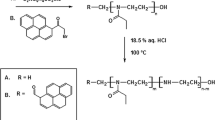The cytotoxicity of four catalysts commonly used for the synthesis of copolymers for biomedical use, such as segmented polyurethanes, was evaluated towards two types of cells, the first being the well-characterized cell line Swiss 3T3 mouse fibroblasts, the second the actual living system that faces any device in contact with blood, i.e. human endothelial cells (HEC). The catalysts were two tertiary aliphatic amines: TMBDA (tetramethylbutanediamine), and DABCO (1–4 diazo (2,2,2) octane); two alkyl tin compounds: DBTDL (dibutyl-tin-dilaurate), and SnOct (stannous octoate). Cytotoxicity tests were carried out by adding to the culture medium, after cell adhesion, different concentrations of each catalyst in dimethylsulphoxide, and keeping them in contact with the monolayer for 72 h. All the catalysts proved to be cytotoxic, although at different extent (in the order: DABCO < TMBDA < SnOct < DBTDL); their dose inhibiting 50% of cell growth (IC50) came out to be lower for 3T3 fibroblasts than for HEC, with the exception of DBTDL, which showed a similar toxicity for both the cell lines. As an example, the cytotoxicity of a polyurethane-amide, laboratory synthesized with DBTDL as catalysts, was checked with fibroblasts. By using both the method of the extract, and that of the direct contact (through a microporous membrane), a moderate to severe cell growth inhibition, related to the Sn content in the material, was observed.
Similar content being viewed by others
References
M. Lelah and S. L. Cooper, “Polyurethanes in medicine” (CRC Press, Boca Raton, Florida, 1986) p. 24.
S. L. Reegan and K. C. Frisch, Adv. Urethane Sci. Technol. 1 (1971) 1.
N. I. SAX and R. J. LEWIS. “Dangerous properties of industrial materials”, Vol. III, 7th Edn Van Nostrand Reinhold, (1989).
W. J. Hayes and E. R. Laws (eds), The handbook of pesticide toxicology, Vol. 2 (Academic Press, San Diego, USA, 1980) p. 537.
D. Cohn, S. Bilenkis, A. Penhasi and S. Yitzchaik, in “Clinical implant materials, advances in biomaterials”, Vol. 9 edited by G. Heimke, U. Soltesz and A. J. C. Lee (Elsevier, Amsterdam, 1990) p. 473.
M. C. Tanzi, B. Barzaghi, R. Anouchinski, S. Bilenkis, A. Penhasi and D. Cohn, Biomaterials 13 (1992) 425.
R. Brambilla, R. Zippel, E. Sturani, L. Morello, A. Peres and L. Alberghina, Biochem. J. 278 (1991) 447.
M. C. TANZI, R. ANOUCHINSKI, M. G. LAMPUGNANI, E. DEJANA and M. RESNATI, in Proceedings of the 17th Annual Meeting of the Society for Biomaterials, May 1–5 1991, Scottsdale, AZ, p. 127.
Author information
Authors and Affiliations
Rights and permissions
About this article
Cite this article
Tanzi, M.C., Verderio, P., Lampugnani, M.G. et al. Cytotoxicity of some catalysts commonly used in the synthesis of copolymers for biomedical use. J Mater Sci: Mater Med 5, 393–396 (1994). https://doi.org/10.1007/BF00058971
Received:
Accepted:
Issue Date:
DOI: https://doi.org/10.1007/BF00058971




